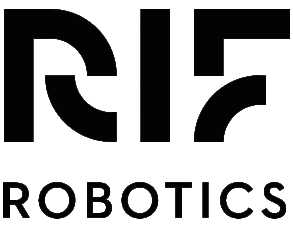At RIF Robotics, we are building PacR, a product that leverages computer vision, artificial intelligence, and robotics to streamline the inspection of surgical instruments for cleanliness and automate surgical tray assembly in hospitals and ambulatory surgery centers to eliminate surgery delays and improve patient outcomes.
Each year, over 51 million surgeries are performed in the United States, each requiring numerous instrument trays to ensure patient safety and surgical efficiency. However, the sterile processing industry is grappling with severe labor shortages, leading to critical errors that can compromise safety and cause significant financial strain. Mistakes in sterile processing contribute to an estimated $25 billion in operating room delays, $16 billion in reprocessing costs, and $3.3 billion in patient infections annually. The novel product that RIF Robotics is building, PacR, transforms surgical preparation by addressing critical healthcare challenges: Accurate Trays: PacR ensures 100% accurate surgical trays, eliminating human error and mitigating risks of missing or incorrect tools. Infection Risk Reduction: By inspecting each instrument for bioburden, PacR reduces surgical site infections and improves employee safety. Intelligent Data Collection: We convert manual assembly into a transparent, data-driven workflow, enabling instrument tracking and regulatory compliance. Operational Optimization: By automating a complex process, we reduce labor requirements, allowing healthcare professionals to reallocate efforts toward direct patient care.
Kevin DeMarco and Sergio Garcia are both experts in the robotics industry with PhDs in Electrical and Computer Engineering from the Georgia Tech. Collin Farill is an industrial designer with over fifteen years of consulting experience in product design and user experience. Before starting RIF Robotics, Kevin and Sergio were both research faculty at Georgia Tech, where they developed robotic systems for DARPA, the Air Force Research Lab, and the Naval Research Lab. Our journey began with a simple request from our CEO's aunt, an O.R. nurse, 'Could a robot assemble surgical trays?' This inspired us to do conduct in-person research with the Veterans Affairs Innovation Network, in which we visited four VA hospitals to understand the various logistics problems that hospitals face. Catalyst by Wellstar Founder Feature Video: https://www.linkedin.com/posts/catalyst-by-wellstar_meet-kevin-demarco-phd-from-rif-robotics-ugcPost-7265024662416322561-gRp9?utm_source=share&utm_medium=member_desktop
We are working closely with our partner and investor Wellstar Hospital system to develop and test PacR in hospital sterile processing departments. In parallel, we are working towards additional partnerships with Northside Hospital, Grady Hospital, and Emory Hospital in 2025 to ensure that PacR is not specific to only Wellstar. We have had multiple meetings with executives at Steris, Getinge, Healthmark, and Aesculap to discuss partnerships. We are waiting to formalize these partnerships until we finalize product development to have a better negotiating position, such that we don't have to be exclusive to one partner. Partnerships: - Catalyst by Wellstar is one of our investors, which provides us with access to their hospitals, technicians, and executives. - We are partnered with the Georgia Alliance of Community Hospitals (https://gach.org/), which provides us with direct access to hospital executives in Georgia. - We wrote an R&D grant proposal with Georgia Tech robotics faculty, which was awarded by the Georgia Research Alliance and currently underway. Follow-on non-dilutive funding is likely. - We are close to finalizing pilots at Northside Midtown, Grady Hospital, and Emory Midtown for 2025. - We secured a partnership with Mitsubishi Electric to receive preferential pricing for their robotic arms.
Our business model addresses healthcare technology adoption barriers through a hardware-enabled SaaS subscription: Flexible Pricing: Low-risk entry point for hospitals, eliminating capital expenditure barriers. Dual Market Focus: Hospital Sterile Processing Departments and Off-Site Sterile Processing Facilities. Added Value: Beyond hardware, we'll monetize unique data insights through tray tracking and optimization services, providing intelligence on instrument lifecycle and operational efficiency. Our model transforms technology acquisition from a capital investment to an operational solution that delivers immediate value.
We will be raising $5M in Q3 of 2025 to grow our team of engineers, customer success representatives, and technicians. Throughout 2025, we will be testing our system at our partner hospitals (Wellstar, Emory, and Northside) and optimizing PacR for production. In 2026, we will be establishing a production facility near Atlanta, GA, where we will build and assemble PacR systems for delivery to hospitals and ambulatory surgical centers. We are using mostly off-the-shelf hardware, so assembly is similar to assembling a desktop computer, not like building printed circuit boards or computer processors.
At its core, PacR consists of an off-the-shelf six-degrees-of-freedom robotic arm, multiple cameras, and a custom computer vision system that can identify surgical instruments and command the robotic arm to manipulate instruments. To ensure operator safety, PacR is enclosed in a robotic "work-cell" that has access to a vending machine system for surgical instruments. Currently, PacR is able to: - Identify stainless steel surgical instruments with custom-trained computer vision system, pick and place surgical instruments with robotic arm to assemble custom surgical trays. - Distinguish between instruments that are similar through close-up inspection (e.g., dressing forcep vs. tissue forcep, curved mayo scissors vs. straight mayo scissors). - Automatically collect and annotate training images of new surgical instruments with camera on robotic arm in various poses and lightning conditions. - Detect and estimate the poses of a medical stringer and surgical tray with a 3D camera mounted on the robotic arm to increase sterile processing technician productivity. We have submitted an international (PCT) patent for our novel robotic end-effector for grasping and manipulating scissor-like objects for placement on a medical stringer. In 2025, we are conducting user studies with sterile processing managers and technicians in Atlanta.
* Catalyst by Wellstar (https://catalyst.wellstar.org/) - $125k * Overline (https://overline.vc/) - $525k * Georgia Research Alliance (https://gra.org/) - $50k * Sloan Scholars Mentoring Network (https://sloan-scholars.ssrc.org/page/grants) - $10k * Start It Up Georgia - $2.5k * Georgia Tech Internship Xperience - $6,080


